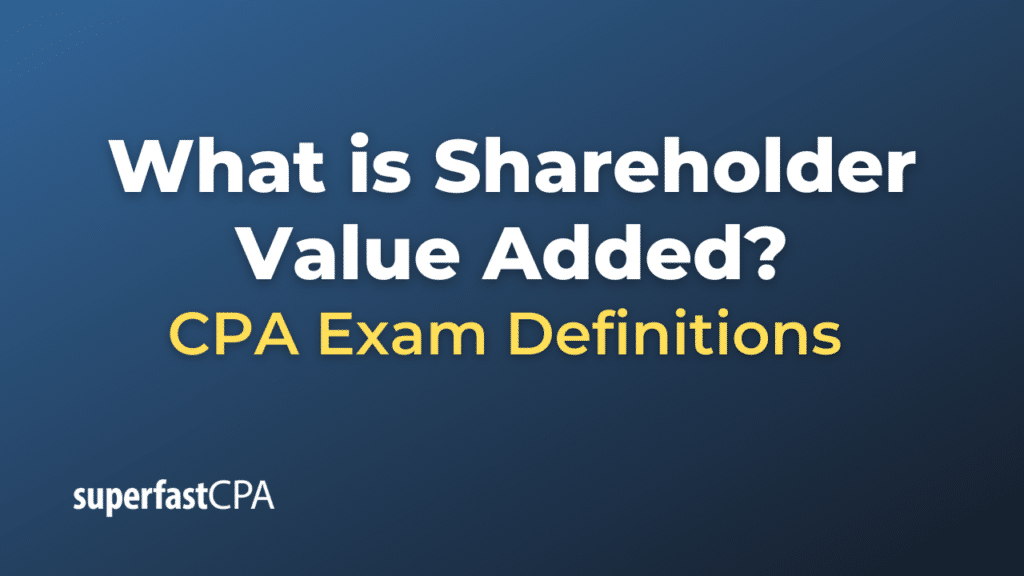Shareholder Value Added
Shareholder Value Added (SVA) is a financial performance metric used to measure the value a company has created for its shareholders. It represents the economic profit generated by a company after the cost of capital. The basic idea behind SVA is that companies should create value for their shareholders that is above and beyond the cost of doing business, including the cost of equity and debt capital.
The formula for calculating SVA is:
SVA = NOPAT − (WACC × Invested Capital)
Where:
- NOPAT (Net Operating Profit After Taxes): Represents the profit a company would have earned if it had no debt.
- WACC (Weighted Average Cost of Capital): Represents a company’s average after-tax cost of capital. It takes into account the cost of equity, the cost of debt, and the proportion of each in the company’s capital structure.
- Invested Capital: The total amount of money invested in a company. It typically includes equity capital and net debt.
When SVA is positive, it indicates that the company has created value for its shareholders, as its returns are greater than its cost of capital. If SVA is negative, it implies that the company has destroyed value, as it is not generating enough returns to cover its cost of capital.
This metric is useful for investors and company management to evaluate how well the firm is using its capital to generate value for its shareholders.
Example of Shareholder Value Added
Let’s dive into a fictional scenario to illustrate the concept of Shareholder Value Added (SVA).
Example: HealthyFoods Inc., a company that produces organic health foods and snacks.
Background:
HealthyFoods Inc. has seen steady growth over the past few years due to increasing consumer interest in organic and healthy eating. The management is continually seeking ways to maximize value for shareholders.
For a given financial year, HealthyFoods Inc. reports the following:
- NOPAT (Net Operating Profit After Taxes): $5 million
- WACC (Weighted Average Cost of Capital): 8%
- Invested Capital: $40 million (This includes equity and debt used to finance the company’s operations and growth.)
Calculation of SVA:
Using the SVA formula:
SVA = NOPAT − (WACC × Invested Capital)
SVA = $5 million – (0.08 x $40 million)
SVA = $5 million – $3.2 million
SVA = $1.8 million
Analysis:
HealthyFoods Inc. has added a value of $1.8 million for its shareholders during that financial year. This means that after covering the costs of doing business and the costs associated with its capital (both debt and equity), the company has generated an additional $1.8 million in value for its shareholders.
Implication:
The positive SVA indicates that HealthyFoods Inc.’s strategies and operations for that year have been effective in creating value above its capital costs. Shareholders and potential investors may see this as a favorable indicator of the company’s ability to provide a return on investment. Conversely, management can use this metric to identify whether their decisions are genuinely generating value and to benchmark performance year-over-year.
Remember, while SVA is a helpful tool, it should be considered alongside other performance metrics and qualitative factors to get a comprehensive view of a company’s performance.












